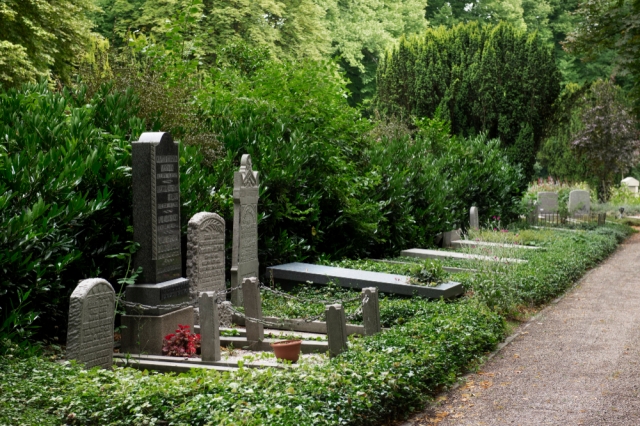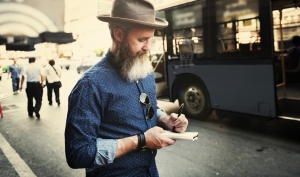Losing a loved one can leave us feeling lost and grieving. Memorials, headstones, and remembrance help keep their memory alive. Discover the hidden power behind these silent sentinels of memory.
What Are Memorials?
Memorials are structures or events that help us honor people who have died. They can be simple or grand, but all serve the same purpose to help us recall and reflect. Across different cultures and religions, memorials guide ceremonies like funerals to process grief.
These tributes act as physical reminders of those we lost. They help by balancing our memories of the deceased with their achievements. Through shared commemoration, memorials also keep connections alive and aid in emotional healing.
The Significance of Memorials in Human Psychology
Memorials hold deep meaning for our minds. They help us connect with history and process emotions.
Connection to the past
Memorials link us to our history. They remind communities of past events and help keep memories alive. These structures can strengthen collective memory and identity formation. People visit them to honor history and recall what happened.
A memorial can serve as a tribute to those who suffered or died in traumatic events. This connection fosters reflection and healing for individuals and groups alike.
Memories are the key not to the past, but to the future. – Corrie Ten Boom
Encouraging reflection
Encouraging reflection at memorials helps people connect to their feelings. People visit these places to think about past events. They often leave objects like flowers, notes, or photos. These acts help them feel connected and even in control of the sadness.
Memorials also use design to prompt deeper thought. Walking through a quiet garden or touching a stone wall can create strong emotions. These experiences make visitors stop and reflect on history, preparing them for a journey into collective memory.
Fostering collective memory
Memorials help us recall shared history. They connect people through common experiences and emotions. When visitors see names or symbols, they feel linked to past events and those affected.
Design features like reflective surfaces make these connections even deeper.
Ritual behaviors at memorials also strengthen group identity. People perform acts like leaving flowers or holding moments of silence. These actions bring a sense of unity and shared memory among visitors.
Promoting unity and healing
Memorials help people come together and heal. They create a space where folks can reflect on shared loss and grief. This shared experience often brings communities closer. For example, the Vietnam Veterans Memorial helps many with PTSD find peace.
Rituals at memorials also play a big role in healing. These activities, like placing flowers or lighting candles, let people show their feelings in a group setting. This reinforces unity and support among members of the community during tough times.
Providing a sense of closure
Memorials help people feel a sense of closure. They transform painful memories into symbols we can understand. This helps us reflect on past traumas and losses, fostering healing for individuals and communities.
The Vietnam Veterans Memorial is a good example. It aids veterans with PTSD in confronting their losses. This facilitates their healing process and provides a form of closure that might be hard to find elsewhere.
Monuments like these promote unity by offering comfort through shared grief, helping both mourning individuals and the larger community move forward together.
Types of Memorials
There are many ways to create a memorial. Each type serves a unique purpose and evokes different emotions.
Monuments
Monuments stand tall and majestic. They honor events, people, or achievements. Traditional monuments focus on victories and heroism. They remind us of great deeds and bravery.
Some monuments also help us commemorate the victims of tragedies. These are called counter-memorials. They promote reflection and open-ended interpretations. Monuments engage our emotions through design and create a strong impact on visitors.
Plaques
Plaques are small, flat markers made from strong materials like granite, bronze, and brass. These commemorative plaques honor and recognize loved ones or significant events. They often include engraved names, dates, quotes, and dedications which add a personal touch.
These memorial tablets provide a permanent place for family and friends to gather and heal together. Community members can reflect on the past while standing at these sites. Tribute plaques help preserve the memories of notable figures too.
This ensures their contributions won't be forgotten.
Statues
Plaques are small, but statues stand tall and proud. Statues show history through art. They honor people and events. Public spaces often have these sculptures.
These structures impact our emotions. The statue of Theodore Roosevelt at the American Museum of Natural History caused controversy due to his racist views. Such discussions show how statues reflect societal power and historical challenges.
Statues contribute to urban design too. They shape feelings and actions in an area, making them crucial environmental cues in cities worldwide.
Cenotaphs
Statues honor people with lifelike figures. Cenotaphs are different. They mark a spot where the honored person is not buried there. These memorials can be found in cemeteries or public places.
Cenotaphs often commemorate those who died in wars or natural disasters. Made from granite or bronze, they serve both practical and emotional purposes. Many people visit them to feel connected to their lost loved ones and find a place for tribute.
Headstones
Headstones are a common and deeply personal way to memorialize loved ones in cemeteries. These grave markers come in various styles, each offering a unique way to honor the deceased:
Flat Headstones: These lie flush with the ground, providing a simple and understated memorial.
Slant Headstones: With an angled face, these offer more visibility than flat markers while maintaining a low profile.
Pillow Markers: These have a slightly raised and sloped face, resembling a pillow for a gentle appearance.
Upright Headstones: Standing tall, these traditional markers make a more prominent statement in cemeteries.
Headstones can be customized with engravings, including names, dates, epitaphs, and symbolic artwork. They are typically made from durable materials like granite or bronze to withstand the elements over time.
Memorial gardens
Memorial gardens are special places where people honor deceased loved ones. These gardens use living plants like flowers and trees to create a calm setting for visitors. Benches, water fountains, and paths make the space inviting and accessible.
Drought-tolerant plants help keep maintenance easy. Personal items like plaques or small statues add a unique touch to each garden. Memorial gardens also host community events to support those grieving.
How Memorials Impact Society
Memorials play a big role in healing and remembrance. They help people reflect on the past.
Encouraging remembrance and honoring of history
Memorials play a key role in helping people recall and honor the past. They remind us of important events or individuals who made a difference. For example, the Vietnam Veterans Memorial in Washington D.C. helps people reflect on those who served and sacrificed during the war.
These spaces encourage reflection and respect. Visitors can pause, think, and connect with history. This act of recalling can help heal both individual and collective wounds. It strengthens community identity by reinforcing shared values through remembrance rituals like visiting these memorial sites regularly.
Shaping public opinion and social movements
Memorials shape public opinion and social movements. They highlight historical events, sparking discussions about loss and justice. For example, the Vietnam Veterans Memorial helped change views on war.
Community engagement in creating memorials strengthens their impact. Local input makes them relevant and meaningful to society. This builds collective memory and fosters social cohesion.
Serving as educational tools
Statues and plaques help us learn. They make history come alive. Students look at them and ask questions. This builds their skills in observing and thinking. For example, the National Monument to the Forefathers makes people think about different histories.
These tools tell personal and public stories. People reflect on these tales deeply when they see a monument or memorial garden. It helps them connect with past events or figures that shaped society.
Memorials also shed light on lesser-known people who played important roles but are often forgotten today.
Supporting healing and reconciliation
Memorial sites help individuals cope with grief and loss. They offer a tangible connection to the deceased, aiding emotional expression. People can share stories at these sites, which helps validate their feelings of sorrow.
These places also foster a community of grievers. This reduces feelings of isolation. Being in such spaces encourages unity and collective healing.
Conclusion
Memorials hold great power. They connect us to the past. They help us reflect and heal. Designs full of meaning make them even stronger. Memorials shape our thoughts, unite us, and teach future generations.






